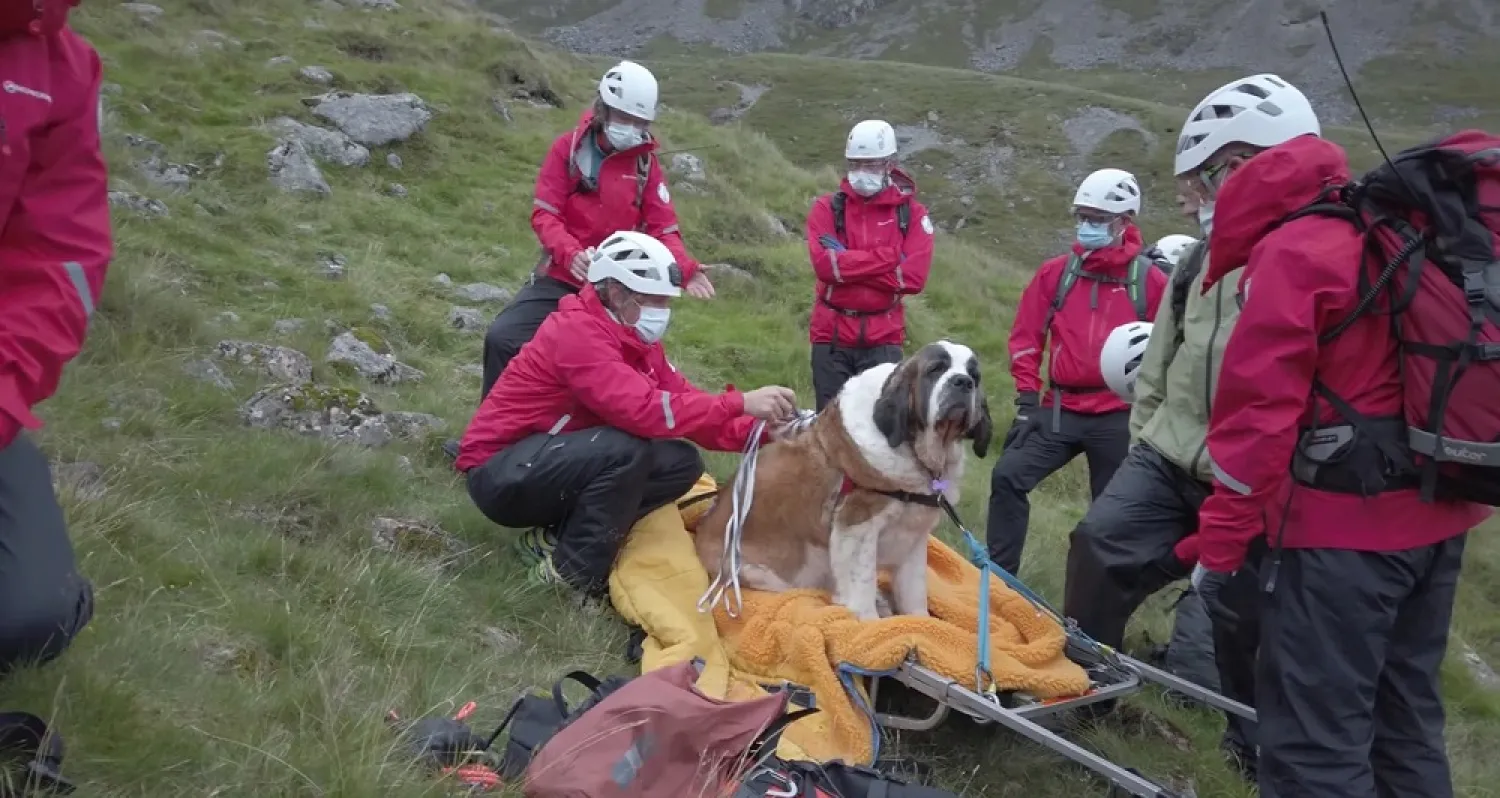A rescue team has had to rescue a St. Bernard dog named Daisy after she got into difficulty on England's highest mountain, in an unusual reversal of the traditional roles.
Daisy collapsed last Friday while descending from the summit of Scafell Pike in Cumbria, northwest England, so the 16-member rescue team scrambled to the scene and carried the 55kg dog down the mountain on a stretcher.
The dog had shown signs of pain in her rear legs and had refused to move, the Wasdale Mountain Rescue Team said on its Facebook page. Her owners had kept Daisy fed and well-hydrated while waiting for the team to arrive.
"A few different tactics needed to be tried until both Daisy and her stretcher bearers were all satisfied and progress down-hill could be made," the team said in a statement.
Video from the rescue shows Daisy sitting quietly as the rescuers - wearing masks due to the coronavirus pandemic - strapped her to a stretcher and then began the arduous descent.
The giant dog appeared relaxed but showed an interest in the rescue operation.
Daisy then "had a good night's sleep, snoring a little louder than normal, but back to her usual high spirits", Mountain Rescue said.
It was Daisy's second rescue by humans. She had a hard start in life until her current owners, according to Wasdale Mountain Rescue Team.
St. Bernards, also known as Alpine Mountain Dogs, hail from the Great St. Bernard Hospice on the Swiss-Italian border.
Originally used as guard dogs, the breed became famous for saving travelers who had lost their way in the snow and mist of the Alps.









